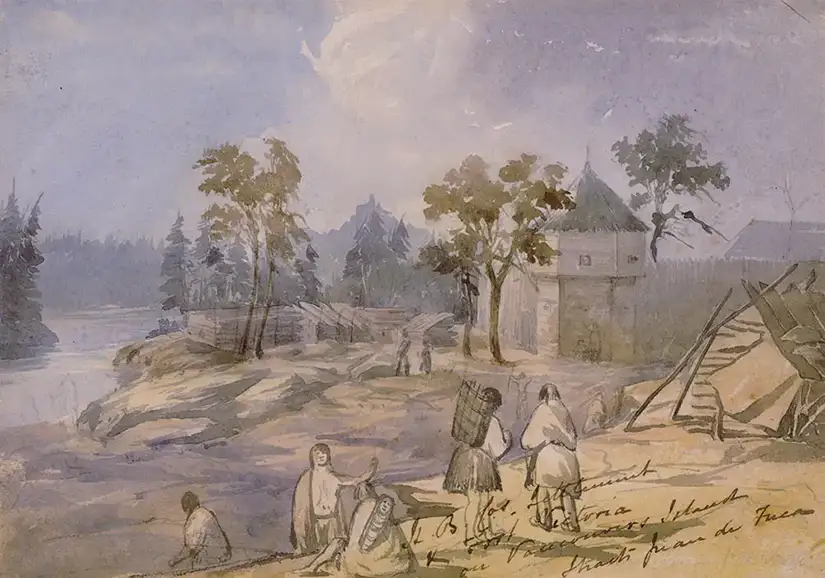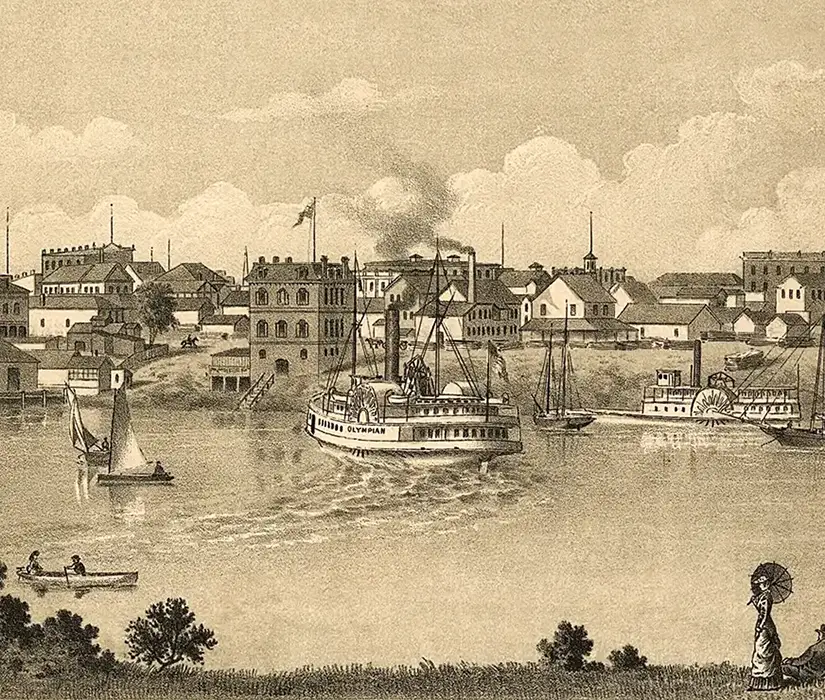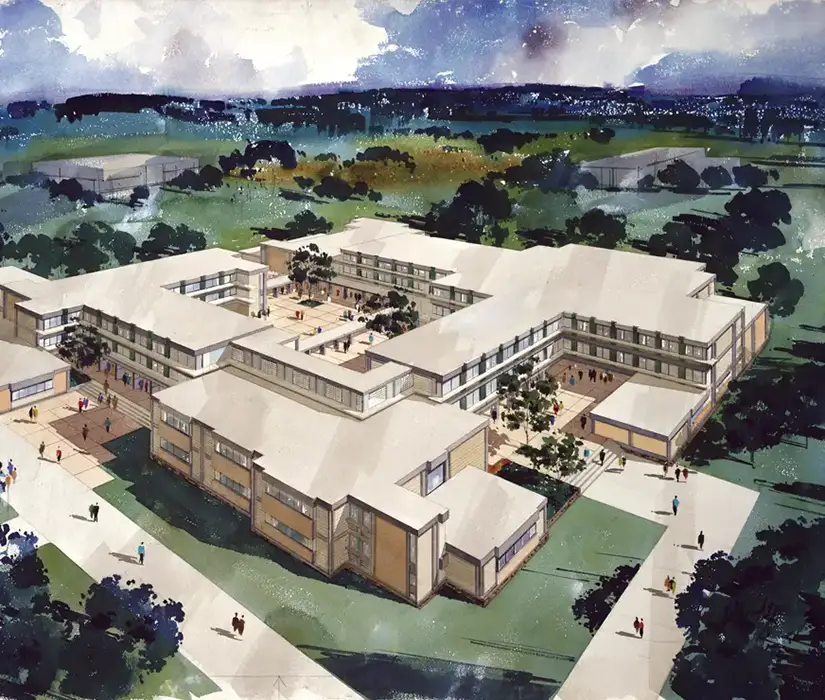Garden City: Designing Victoria
Our introductory exhibit offers an overview of the architectural history of the city of Victoria, with a focus on the period since European colonization in the mid-19th century. Learn about how early settlers cooperated with local Songhees First Nations people, to establish themselves, and how this led to rapid growth and expansion into the modern city we see today.

The Fort and the Gold Rush
When the first Euro-Canadian fur traders arrived on the southern tip of Vancouver Island, they were in search of a site for a new trading post that would allow them to establish a more permanent presence in the region. This led to the establishment of Fort Victoria in 1843 and, from that point onwards, newcomers continued to arrive in increasing numbers.
In 1858 a major gold rush began on the Fraser River and the region became known around the world as a place to “strike it rich”. As a result, the population of Victoria grew exponentially as did the requirement for the new accommodations, businesses, and services that they needed. These were to become the foundations of the future city.
Growing City
Although Victoria grew rapidly during the last decades of the nineteenth and the opening decades of the twentieth centuries, the city’s newly established connection to and dependence upon the economies of Europe and the rest of North America meant that it was also subject to the “boom and bust” nature of those economies. By the turn of the century, however, Victoria was one of the largest cities on the Pacific coast of North America and this status was lavishly displayed in the rich and enduring architecture from this period, much of which survives to this day.
Victoria’s designation as the provincial capital of British Columbia ensured that investment and settlement would continue. The mild climate and natural beauty of the region made the city an international tourism destination and steamships and railways brought in steady streams of visitors and new residents from all over the world. Structures such as the grand new Provincial Legislature and the Empress Hotel, as well as many fine private residences, remain today as testaments to the emergent metropolitan identity of the city.


Modern Era
Throughout the middle and later decades of the twentieth century Victoria underwent another period of massive transformation. The postwar population boom saw increased densification in urban areas as well as the extensive development of suburban residential neighborhoods. New innovations in building materials and techniques facilitated local expressions of emerging international architectural styles, though more traditional revivalist genres continued to appear well into the period. Locations that had previously been considered as “hinterlands” to the city, such as the new campus of the University of Victoria in Gordon Head, became the sites of some of the most progressive building projects in the region.
